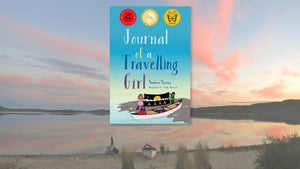🇨🇦 Buy Canadian Books 🇨🇦 Heritage House is a Canadian owned and operated independent publisher.



Book Details
Page Count:
144
Publication Date:
Oct 13, 2020
Dimensions:
Width: 5.50 in
Height: 8.00 in
Study Guides & Additional Content

Teaching Guide from Nadine Neema
ViewRelated Articles

Journal of a Travelling Girl nominated for Quebec Writers Federation award
Heritage House Publishing is delighted to share the news that Journal of a Travelling Girl by Nadine Neema has been nominated for its fourth young ...

Journal of a Travelling Girl finalist for two Canadian Children's Book Centre Awards
The Canadian Children’s Book Centre (CCBC) announced the 2021 finalists for eight major awards celebrating Canadian books for young people on Septe...

Journal of a Travelling Girl — Two Book Celebrations
In October 2020, Heritage House published Journal of a Travelling Girl by Nadine Neema. Although it has seen great success, due to pandemic restric...
Find Our Books
Heritage House books can be found at many retailers in Canada and the US.
Find your local Canadian independent bookstore.
Ebooks available from: Kobo | Kindle | Nook | Apple Books
For wholesale information, visit our Orders page.